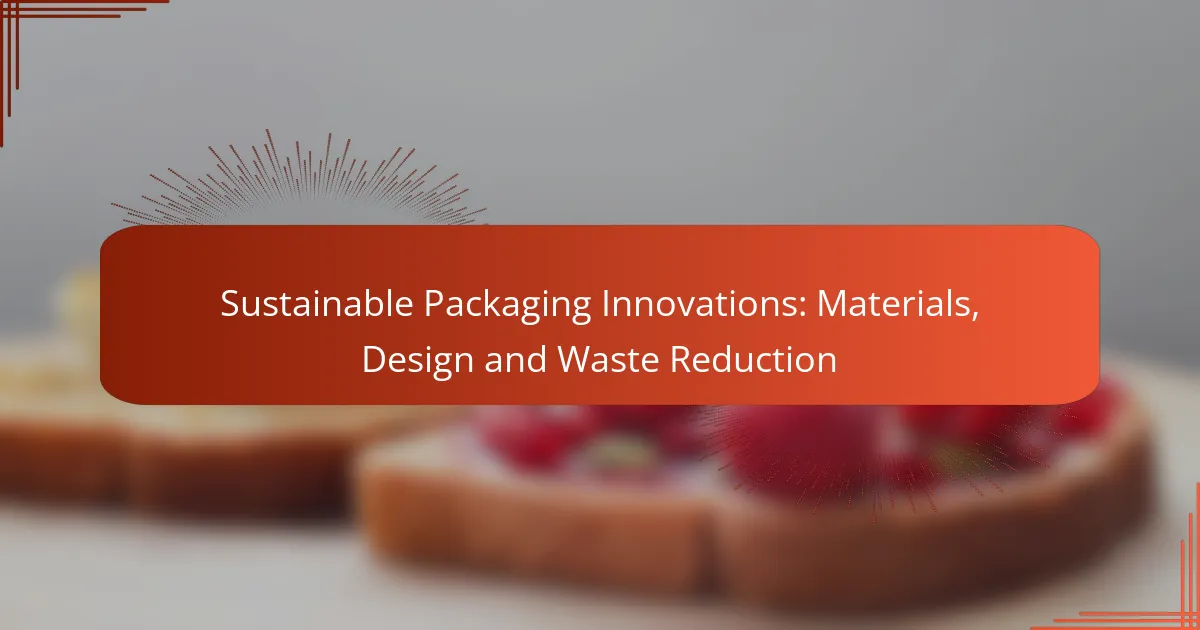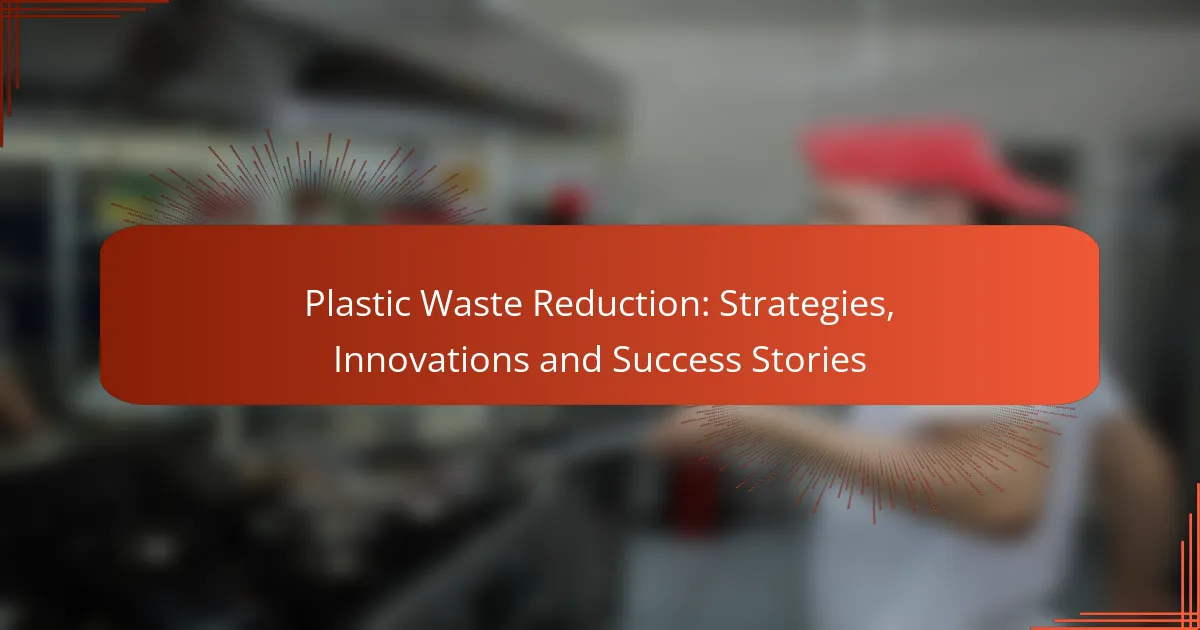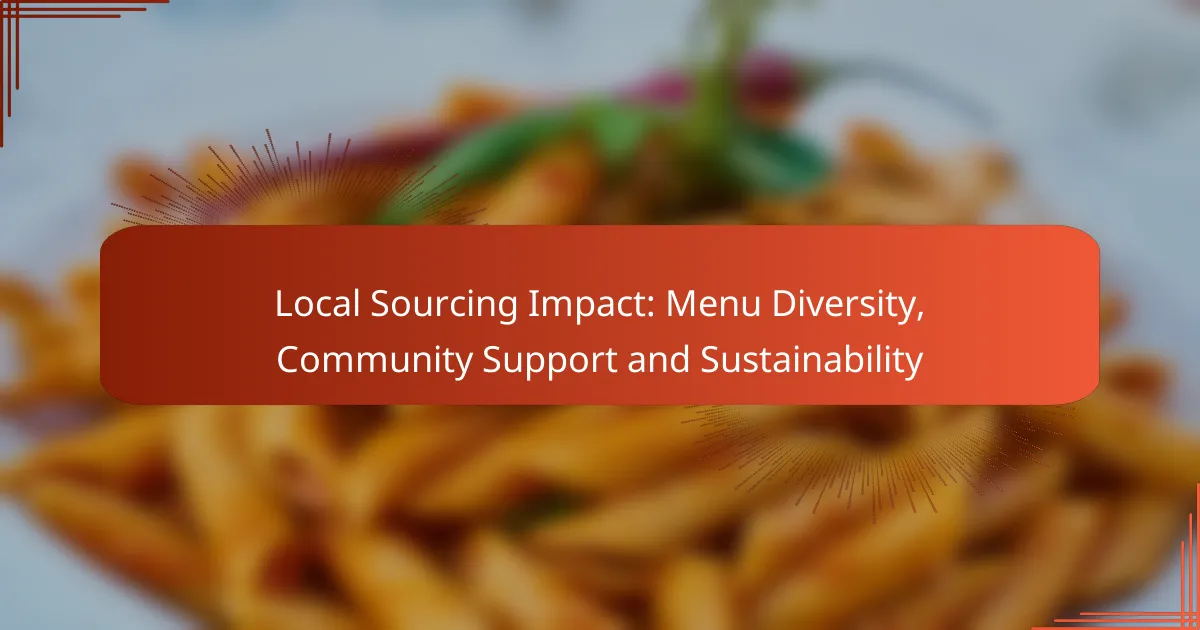Sustainable packaging innovations are transforming the way products are packaged, focusing on reducing environmental impact through advanced materials and design strategies. By prioritizing recyclability and waste reduction, these innovations not only enhance brand reputation but also align with consumer demand for eco-friendly practices. As industries adopt these solutions, they contribute to a more sustainable future while optimizing operational efficiency.

What are the latest sustainable packaging innovations?
The latest sustainable packaging innovations focus on reducing environmental impact through new materials, designs, and technologies. These advancements aim to minimize waste, enhance recyclability, and promote eco-friendly practices across various industries.
Biodegradable materials
Biodegradable materials are designed to break down naturally in the environment, reducing landfill waste. Common examples include plant-based plastics, such as polylactic acid (PLA), which can decompose within a few months under the right conditions.
When considering biodegradable options, it’s essential to evaluate the specific conditions required for decomposition, such as temperature and moisture levels. Not all biodegradable materials break down effectively in standard landfill settings, so proper disposal methods are crucial.
Recyclable designs
Recyclable designs focus on creating packaging that can be easily processed and reused in the recycling stream. This includes using single-material structures that simplify sorting and processing, such as cardboard and certain plastics.
To enhance recyclability, brands should avoid mixed materials and complex designs that complicate recycling efforts. Clear labeling and consumer education about recycling practices can also improve recycling rates.
Edible packaging
Edible packaging is an innovative solution that allows consumers to eat the packaging along with the product, reducing waste. Common materials include seaweed, rice paper, and other natural substances that are safe for consumption.
This approach not only minimizes waste but can also enhance the overall product experience. However, considerations around shelf life and food safety must be addressed to ensure the packaging remains effective and appealing.
Smart packaging technologies
Smart packaging technologies incorporate sensors and indicators to provide real-time information about the product’s condition. These innovations can include freshness indicators, temperature sensors, and QR codes that link to additional product information.
Implementing smart packaging can enhance consumer engagement and reduce food waste by ensuring products are consumed while still fresh. However, the added complexity and cost of these technologies should be weighed against their benefits.
Minimalist packaging approaches
Minimalist packaging approaches prioritize simplicity and functionality, often using fewer materials and less design embellishment. This strategy not only reduces waste but also appeals to environmentally conscious consumers.
Brands adopting minimalist packaging should focus on essential elements that protect the product while minimizing excess. This can lead to cost savings and a stronger brand message centered on sustainability.

How do sustainable packaging materials impact e-commerce?
Sustainable packaging materials significantly influence e-commerce by reducing environmental impact and enhancing brand reputation. These materials often lead to lower carbon emissions and can improve customer loyalty through eco-friendly practices.
Reduced carbon footprint
Sustainable packaging materials, such as biodegradable plastics and recycled paper, contribute to a reduced carbon footprint in e-commerce. By utilizing these materials, companies can lower greenhouse gas emissions associated with production and disposal. For instance, switching from traditional plastic to compostable alternatives can cut emissions by a notable percentage.
To maximize the benefits, businesses should consider sourcing materials locally to minimize transportation emissions. Implementing a life cycle assessment can also help identify the most effective materials for reducing overall carbon impact.
Enhanced customer perception
Using sustainable packaging can significantly enhance customer perception of a brand. Consumers are increasingly favoring companies that demonstrate environmental responsibility, and eco-friendly packaging can serve as a key differentiator in a crowded market. Brands that adopt sustainable practices often report higher customer satisfaction and loyalty.
To leverage this perception, businesses should clearly communicate their sustainability efforts on packaging and marketing materials. Highlighting certifications, such as FSC or Cradle to Cradle, can further reinforce a brand’s commitment to eco-friendly practices.
Cost-effectiveness over time
While sustainable packaging materials may have a higher upfront cost, they can lead to cost-effectiveness over time. Reduced waste disposal fees and potential tax incentives for using eco-friendly materials can offset initial investments. Additionally, improved brand loyalty can lead to increased sales, further enhancing profitability.
Companies should evaluate the total cost of ownership when selecting packaging materials. Conducting a cost-benefit analysis can help identify long-term savings and justify the transition to sustainable options. Regularly reviewing packaging strategies can also ensure ongoing efficiency and cost-effectiveness.

What are the benefits of sustainable packaging design?
Sustainable packaging design offers numerous advantages, including reduced environmental impact, enhanced product safety, and improved consumer perception. By utilizing eco-friendly materials and innovative designs, businesses can meet consumer demand for sustainability while also optimizing their operations.
Improved product protection
Sustainable packaging can enhance product protection through the use of durable, biodegradable materials that minimize damage during transport. For instance, materials like molded pulp or recycled cardboard can provide effective cushioning while being environmentally friendly.
Consider using designs that incorporate structural integrity, such as corrugated boxes or reusable containers, which can significantly reduce breakage rates. This not only preserves product quality but also reduces waste, aligning with sustainability goals.
Increased brand loyalty
Consumers are increasingly favoring brands that prioritize sustainability, leading to enhanced brand loyalty. By adopting sustainable packaging, companies can differentiate themselves in the market and attract environmentally conscious customers.
Engaging customers through transparent communication about packaging choices can further strengthen loyalty. For example, sharing stories about sourcing materials or the recycling process can create a deeper connection with consumers who value sustainability.
Compliance with regulations
Many regions are implementing stricter regulations regarding packaging waste and sustainability, making compliance essential for businesses. Adopting sustainable packaging can help companies meet these legal requirements and avoid potential fines or penalties.
Staying informed about local regulations, such as the EU’s Single-Use Plastics Directive or similar laws in other countries, is crucial. Companies should regularly review their packaging practices to ensure they align with current standards and contribute to a circular economy.

How can businesses implement waste reduction strategies?
Businesses can implement waste reduction strategies by adopting practices that minimize waste generation throughout their operations. This involves optimizing logistics, utilizing returnable packaging, and encouraging customer recycling to create a more sustainable business model.
Optimizing supply chain logistics
Optimizing supply chain logistics is crucial for reducing waste. This can involve consolidating shipments to decrease transportation emissions and packaging materials, as well as improving inventory management to prevent overproduction. Businesses should consider using software tools to analyze data and streamline their logistics processes.
For example, companies can implement just-in-time inventory systems, which help maintain lower stock levels and reduce excess packaging. Additionally, collaborating with suppliers to establish more efficient delivery schedules can further minimize waste.
Utilizing returnable packaging
Utilizing returnable packaging is an effective way to decrease waste. This approach involves using durable containers that can be reused multiple times, reducing the need for single-use packaging. Businesses should assess the feasibility of returnable systems based on their product types and customer base.
For instance, companies in the beverage industry often use returnable glass bottles, which can significantly cut down on waste. Implementing a deposit system can incentivize customers to return packaging, ensuring it is reused rather than discarded.
Encouraging customer recycling
Encouraging customer recycling is essential for reducing waste at the consumer level. Businesses can provide clear instructions on how to recycle their packaging and offer incentives for customers who participate in recycling programs. This not only helps the environment but also enhances brand loyalty.
Simple strategies include placing recycling bins in-store and using labels that highlight recycling options. Additionally, companies can partner with local recycling programs to facilitate easier recycling for customers, making it a seamless part of their purchasing experience.

What criteria should businesses consider when choosing sustainable packaging?
Businesses should prioritize environmental impact, material sourcing, and lifecycle management when selecting sustainable packaging. These criteria help ensure that packaging choices align with sustainability goals while meeting consumer expectations.
Material sourcing
Material sourcing involves selecting raw materials that are renewable, recycled, or biodegradable. Businesses should consider the environmental footprint of these materials, including their extraction, processing, and transportation impacts.
For example, using post-consumer recycled content can significantly reduce the demand for virgin materials and lower carbon emissions. Additionally, sourcing materials locally can minimize transportation emissions and support regional economies.
When evaluating suppliers, look for certifications such as FSC (Forest Stewardship Council) for paper products or Cradle to Cradle for various materials. These certifications indicate responsible sourcing practices and can enhance brand credibility.



